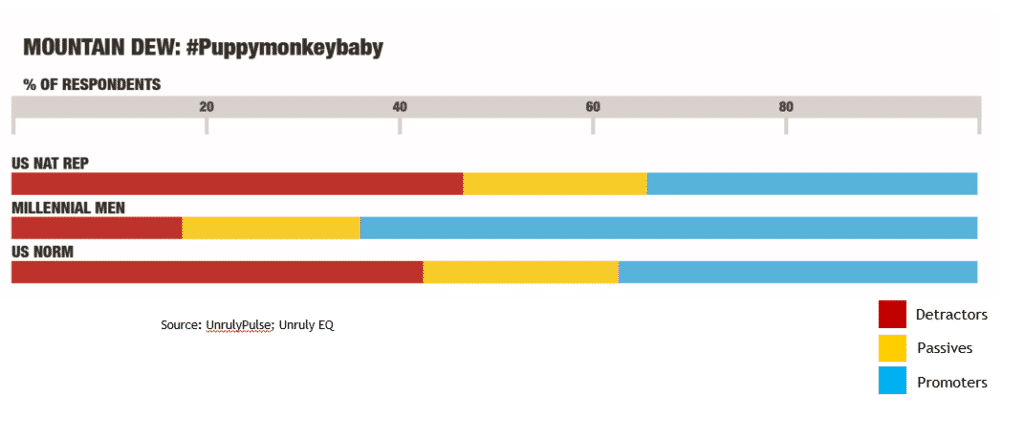How To Bring Emotional Intelligence To Programmatic Video Advertising
Emotional impact is a key factor in driving real business results for digital video campaigns.
In fact, research by Nielsen has shown that ads with above average EEG (emotional) scores have seen a 23% lift in sales volumes.
With an accelerated shift toward programmatic ad buying, advertisers might be left wondering how to marry the efficiencies of programmatic trading with emotional impact, and the advances we’ve taken with emotional targeting.
Impossible, they might say! Nah, Unruly’s got you covered.
Here are 4 tips to boost your emotional intelligence when launching programmatic campaigns:
1. Understand your content
The first step to any successful digital campaign is to understand how your audience will respond emotionally to your creative. And taking that one step further, advertisers should seek to understand how different audiences relate to the same piece of creative. It can vary widely.
Take Mountain Dew’s #Puppymonkeybaby from Super Bowl 2016, for example, which was very polarizing for different viewers. While the average US consumer felt worse about the brand after watching, more than half of male millennials came away feeling more positive about Mountain Dew after watching the video.

76% of people lose trust in a brand if an ad feels fake, so test for authenticity, credibility, relevance to make sure you’re targeting the audience that will like your ad best.
2. Understand your audience
Did you know millennials are 27% more likely to feel intense happiness and 25% more likely to feel inspired than the average consumer while watching a video ad? Or that older male millennials are the most emotional demographic of all?
How about the fact that millennial women are most likely to feel intense feelings of happiness while watching ads? These are just a few of the insights we find when looking at Unruly Pulse, which tracks responses from nearly 1 million panellists.

Does this mean if you want to use other emotions you’re doomed? Of course not. It means if happiness makes sense for your brand and you’re targeting millennials, you are ahead of the game. If you’re trying to hit different emotions, you’ll just have to work harder to trigger them.
Understanding key insights from each demo can help you create ads that are more likely to resonate with your key audiences, but it isn’t a hard-and-fast rule.
3. Up the ante with emotional distribution
Once you’ve created an ad that hits your key demographic with intense emotions, it’s time to unleash it. One of the best ways to do this is to match the emotions of your ad to the mood of the environment or website it appears on. Unruly does this using its Emotional PMP packages – a series of curated private marketplaces that helps marketers match their ads with the mood of their audiences.
By targeting consumers within environments where they are most likely to emotionally connect with a specific ad, brands will be able to further boost the ROI of their ad campaigns
For example, a major movie studio recently launched a campaign using our nostalgic UnrulyX Emotional PMP outperformed benchmarks by more than 168%.
4. Users (always) come first
Viewers are in the driver’s seat. They have more choice of content, platforms and sites to browse than ever before – and if you don’t advertise to them on their terms, they’ll go elsewhere for similar content or turn to ad blockers to clean up their online UX.
People will mute your video ads, the vast majority say they want to be in control of video ads, and 2/3 are so annoyed by having to sit through forced pre-roll that they blame the advertiser for the poor experience. And it makes them angry when they’re forced to sit through ads that don’t align with their preferences.
Interested in the latest updates and insight from the world of programmatic?
